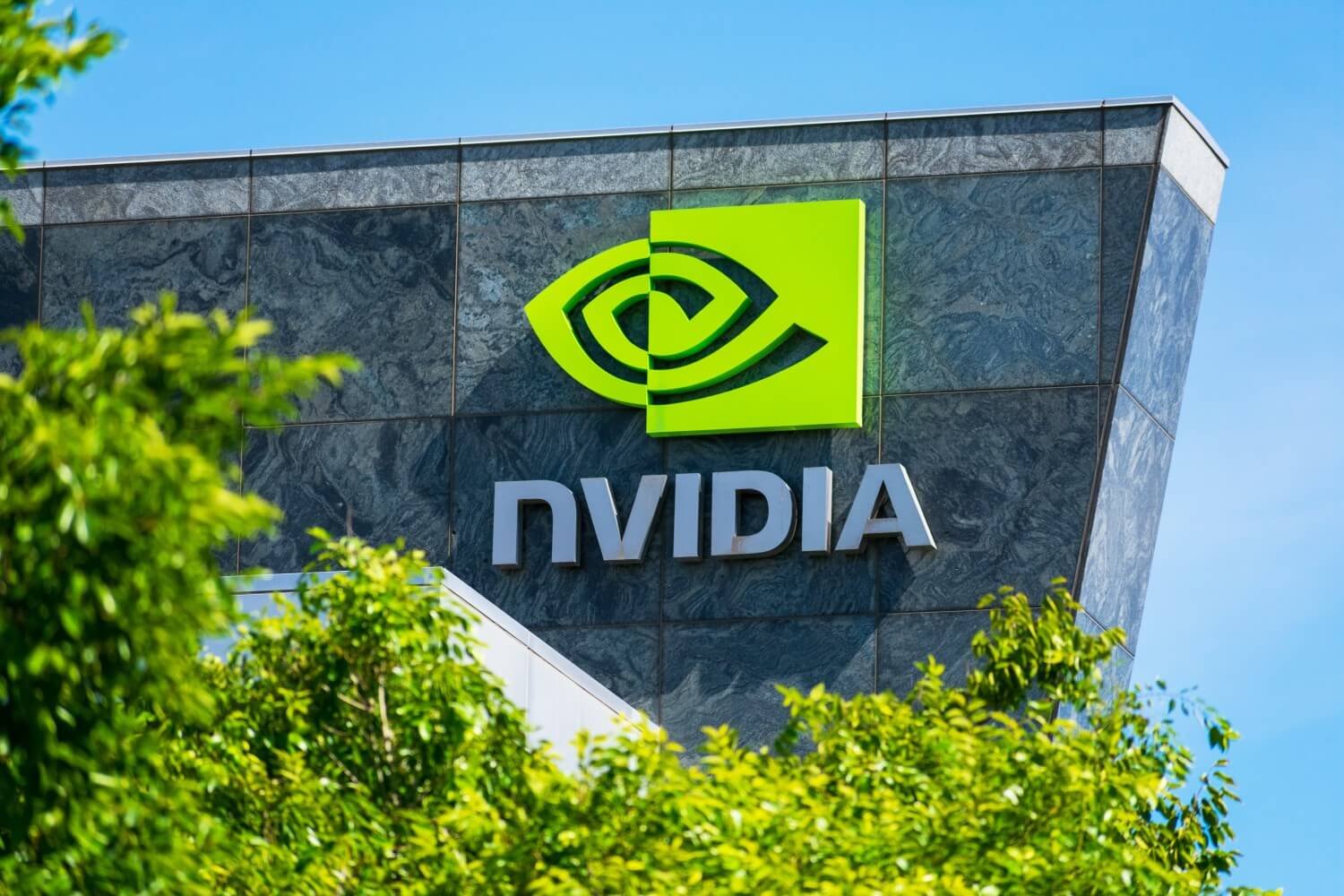Nvidia Salary Negotiation: How to Negotiate a Nvidia Job Offer
Receiving a job offer from such a large tech giant like Nvidia is a huge accomplishment. As a global industry leader in graphics processors, chipsets, and software for AI, Nvidia can offer job candidates the opportunity to work on some of the most innovative and revolutionary technologies today.
However, as excited as you may be to finally land a job offer at Nvidia, you probably shouldn’t accept immediately. While it might be tempting to finally say “yes” after so many rounds of interviews, you don’t want to accept too quickly and miss out on negotiating for a better offer.
Overall, Nvidia’s compensation packages are similar to most other large tech companies. Their compensation packages for hardware engineers, software engineers, data scientists, program managers, solution architects, and many business-based roles are incredibly competitive. But despite their competitive salaries and the fact that they are a top tech employer in California, we want you to know that negotiating your job offer with Nvidia is possible—and we’ve seen it happen.
Over the years, we have helped clients use our negotiation strategies to secure improved compensation packages at Nvidia and we want to share these strategies with you. In the following article, we will go over our top Nvidia salary negotiation tips to help prepare you to negotiate a Nvidia job offer with confidence and success.
Want to Negotiate Your Nvidia Offer? Get offer-specific guidance from an Nvidia Salary Negotiation Coach. We help career professionals negotiate competitive job offers.
Or leverage our Salary Negotiation Courses and Salary Negotiation Templates.
 Job Offer Negotiation Course
Job Offer Negotiation Course
- Get our job offer negotiation strategies, templates, scripts, and guidance.
- Access our step-by-step lessons, compensation research guides, and tools.
- Access Now
 Raise Negotiation Course
Raise Negotiation Course
- Get our raise negotiation strategies, templates, scripts, and guidance.
- Access our step-by-step lessons, compensation research guides, and tools.
- Access Now
Understanding the Compensation Components of a Nvidia Job Offer
Despite offering similar salaries and benefits as other tech companies, Nvidia’s compensation packages have a few important differences—and understanding these differences is key to achieving a successful negotiation.
Taking the time to evaluate each of the different elements of an Nvidia compensation package will allow you to calculate your total compensation (your total annual take home pay) accurately. It’s also important to understand how these components work so that you can have the best chance of negotiating each of them successfully.
When faced with a job offer, many people narrow in on the base salary being offered and fail to consider the other elements that make up the entire compensation package. However, most job offers include other perks and compensation components on top of the standard base salary.
For example, a salary package at Nvidia includes a base salary (no performance bonus), initial equity grant, equity refreshers, a sign-on bonus (if you negotiate a sign-on bonus), as well as many other valuable benefits and perks. For example, here’s what the total compensation may look like in an initial offer for a Nvidia senior software engineer salary (IC3).
Nvidia Software Engineer Salary
Now let’s spend some time going over the different components of a Nvidia compensation package.
Nvidia Base Salary
The first element of your Nvidia job offer is your base salary. An Nvidia base salary is what it sounds like—it’s the guaranteed fixed pay you receive for the work you do. The only time your Nvidia base salary changes is if you receive merit increases or a promotion; otherwise, your base salary will always stay the same.
Similar to most tech companies, Nvidia has predetermined salary ranges for each of their job roles. Each of these ranges have set minimum and maximum amounts associated with them within which your base salary will fall. For example, the ranges for an Nvidia senior software engineer salary will look different from the ranges for an entry level Nvidia software engineer salary. Even job offers at the same level will have different ranges dependent on their specific roles (i.e., Nvidia data scientist salary vs. Nvidia product manager salary).
Why is it important to pay attention to these pay bands? Well, it’s very possible that the base salary you’re initially offered may be at the lower end of the preset pay range for your specific role. If you know what the salary range is for your role, you’ll then know that you can negotiate for a higher Nvidia base pay.
Nvidia Performance Bonus
As briefly mentioned before, there will be no Nvidia performance bonus in your job offer. An annual performance bonus is a typical compensation perk at other companies that is offered to reflect personal and company performance. For example, you would receive a TikTok performance bonus or Salesforce performance bonus if you worked with one of those companies.
Instead, Nvidia only offers a standard merit increase based on your performance each year. Your merit increases will be a percentage of your base salary at Nvidia, making it even more important to negotiate your base salary before you start your role. Because this merit increase is usually just a yearly adjustment to keep up with inflation, we don’t include it in our total compensation calculation.
Nvidia Equity Package
The next part of the job offer is the Nvidia equity package, and this is where our clients have made some of the biggest improvements when we guided them through their Nvidia salary negotiation.
Equity is a key compensation component that drives most job seekers to tech companies, including Nvidia. New employees at Nvidia will receive an initial equity grant in their job offers, which comes in the form of restricted stock units (RSUs). These RSUs represent actual stock (i.e., you will receive shares of NVDA stock) that you will own when the stock vest according to the Nvidia vesting schedule. Nvidia RSUs share similarities with the Microsoft vesting schedule, where they have a four-year vesting schedule that equals 25% vesting per year. However, Nvidia recently removed the one-year vesting cliff which means you’ll get your initial stock in 6.25% quarterly increments over the initial four years.
Nvidia RSU Vesting Schedule
| Company | Vesting Period | Year 1 | Year 2 | Year 3 | Year 4 |
|---|---|---|---|---|---|
| Nvidia | 4 years (equal) | 25% | 25% | 25% | 25% |
Nvidia RSUs can be a large portion of your future compensation but note that they will fluctuate with the market value of Nvidia. In other words, if the NVDA stock is doing great, you share in that success, but if they don’t do great, you’ll see that reflected in your Nvidia RSU value.
Nvidia Signing Bonus
An Nvidia sign-on bonus is a one-time bonus you receive when you start your role. This sign-on bonus acts as an incentive to join the company and to make up for any bonuses or unvested equity you may have given up at your former company. Most roles should be eligible for an Nvidia signing bonus, but we’ve found that it’s not always provided in the initial offer so you can—and should—negotiate for one.
Just like with a Meta salary negotiation, it’s important to note that even if you don’t have a competing offer or you aren’t walking away from money at your past company, you can still negotiate for an Nvidia signing bonus. For some Nvidia salary levels and roles, Nvidia will even provide an additional sign-on bonus in your second year. These anniversary bonuses are given at the beginning of your second year and despite them being less common, they show why it’s so important to navigate the Nvidia salary negotiation strategically.
Nvidia Benefits and Perks
As part of your compensation package, you’ll receive market leading Nvidia benefits and perks which include an Nvidia 401K match, health benefits, and other core benefits that you’d expect from a leading technology company. Plus, they offer an Nvidia ESPP plan for purchasing their stock at a 15% discount and for those relocating, they offer a generous Nvidia relocation package. While these Nvidia perks are typically non-negotiable, we still suggest digging into them during the due diligence phase of our negotiation process.
Five Key Steps to Negotiate a Nvidia Job Offer
Negotiating an Nvidia job offer requires a slightly different approach than how you might negotiate a Google job offer or negotiate a Apple job offer. For a successful negotiation, you need to understand how this approach works before you start negotiating.
Don’t make the mistake of beginning the negotiation process before you have received an actual offer. Like other companies, Nvidia is known for trying to pry about your salary expectations before they extend an offer and you don’t want to jeopardize your chances of receiving a better compensation package by negotiating too early. You’ll always have more leverage once the hiring team has chosen you as the ideal candidate for the role and you have an offer in hand.
In the following section, we are going to walk you through five key steps for a successful negotiation. This approach is based on our experience helping hundreds of clients negotiate for better offers. We are confident that our strategies will help you navigate your Nvidia salary negotiation confidently and effectively. While these are the key steps to a Nvidia salary negotiation, we strongly recommend you work with a Nvidia Salary Negotiation Coach to ensure success in your Nvidia offer negotiation by getting all of our strategies.
1) Understand the Components of Your Nvidia Compensation
This first step in negotiating your Nvidia compensation should be easy since we’ve already gone over it. As a quick reminder, make sure that you understand each of the elements that make up your total compensation of your Nvidia job offer before ever trying to negotiate. If you have specific questions or need more clarity on the various aspects of your job offer, feel free to reach out to our team.
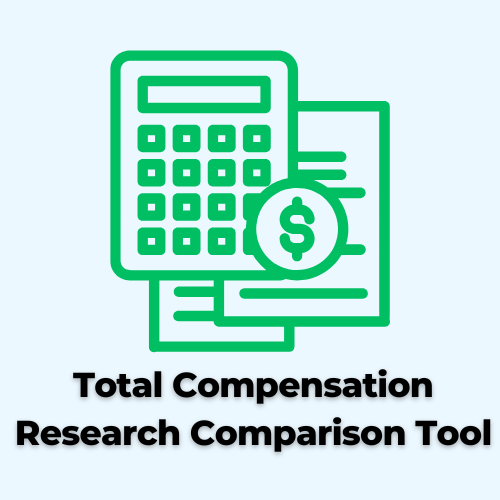
- Understand Total Compensation – Use our tool to break down and calculate the compensation in your job offer.
- Research & Compare Offers – Organize your compensation research and determine the right counter amount.
- Get Here
2) Complete Due Diligence on Your Nvidia Job Offer by Asking the Right Questions
We can’t stress it enough: Make sure you understand the ins and outs of your Nvidia job offer before you start negotiating—and especially before accepting. One of the best ways you can learn more about your offer is by asking the recruiting team strategic questions. By completing your due diligence, you’ll show the recruiting team how much you value the opportunity and how seriously you are considering the offer.
Asking the right questions will also give you the insight needed to develop an effective Nvidia counteroffer. Even if you think you already know what they are going to say, it never hurts to confirm. You can use our list of Strategic Questions to Build Negotiation Leverage if you need help finding the right questions to ask.
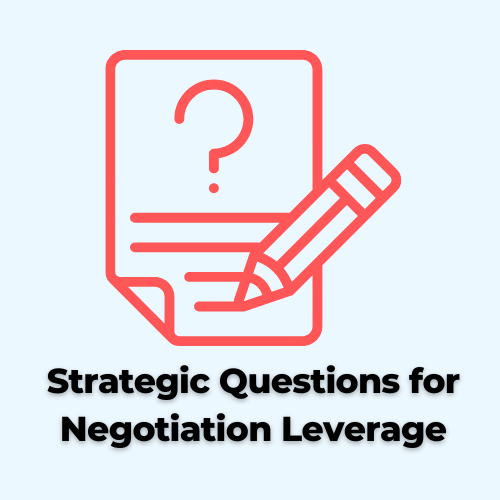
- Build Negotiation Leverage – Ask the right questions to strengthen your negotiation before sending a counter.
- Email & Phone Scripts – Get our list of questions to ask and what to say if the recruiter wants to chat through them.
- Get Here
While you might be tempted to take some time to think over the offer after first receiving it, asking questions right away shows the recruiter that you’re actively interested in understanding and pursuing the role. Since we’ve found that our clients have had more success negotiating Nvidia job offers when they immediately start asking questions, we recommend beginning this step right after receiving your initial offer.
3) Research to Identify What Your Nvidia Compensation Should Look Like
As one of the larger tech companies in the world, it shouldn’t be surprising that Nvidia uses data when making decisions. Investigating compensation data to better understand your role’s pay range will help you determine the strength of your offer and how much you should counter salary for.
Remember: Nvidia salary levels and their ranges are dependent on the specific role, its level, and even its location (i.e., is it a Nvidia software engineer salary or Nvidia hardware engineer salary). You’ll need to research Nvidia compensation ranges for your specific role and where you are located to find the most accurate information. For example, you wouldn’t want to come to the table with data on a standard Nvidia engineer salary if your offer was actually for an ASIC engineer Nvidia salary.
So where should you look for the best data? Sites like Glassdoor and PayScale can give you helpful insights into salaries and other compensation components at Nvidia. However, remember that the publicly recorded pay ranges you see may not reflect all compensation components correctly, especially given changes in compensation from year to year. You can download our Total Compensation Research Comparison Tool to help you with your Nvidia compensation research.

- Understand Total Compensation – Use our tool to break down and calculate the compensation in your job offer.
- Research & Compare Offers – Organize your compensation research and determine the right counter amount.
- Get Here
Once you’ve identified the compensation range for your specific role, we recommend that you shoot for the mid-to-top end of that range during your Nvidia job offer negotiation.
4) Send an Nvidia Counteroffer to the Recruiter
Once you’ve prepared for the negotiation by completing the three steps above, you should be ready to send over your Nvidia salary negotiation counter. Your Nvidia counteroffer is an exciting opportunity to advocate for the compensation you deserve and to highlight what you would bring to the team.
Begin your negotiation by presenting your Nvidia counteroffer to the recruiter that includes references to the research you’ve conducted. Respectfully communicate how the benefits in your initial offer differ from other companies and/or your current role just like we suggest in our Counteroffer Drafts. While you can conduct your Nvidia counteroffer over the phone, we strongly recommend doing this process via email. Email ensures everything is in writing and it also gives the recruiter something tangible (and accurate) to share with the hiring team.

- Proven Counteroffer Templates – Built from hundreds of successful job offer negotiations.
- Negotiate with Confidence – Remove the guesswork with our professionally crafted counteroffers.
- Get Here
Make sure to be firm, courteous, and professional throughout the entire negotiation. Since you’re not an employee yet, your negotiation is your chance to highlight how you’d act once an official member of their team.
5) Handle Any Objections from the Nvidia Recruiter
While it’s possible that the recruiter will immediately come back with an updated Nvidia offer letter, this probably won’t be the case. The more likely scenario is that the recruiter will return with a list of excuses for why the hiring team cannot make any adjustments to your Nvidia compensation package. If this happens, don’t panic. You should view their “No” as an objection you need to overcome that can be politely and professionally pushed back on.
If you do receive a “No” to your Nvidia counteroffer, begin by respectfully acknowledging their limitations. However, you should then restate your ask and desire for them to share your counteroffer with the Nvidia team. Even if they insist their team will simply say no, you should still stick to this approach—so be prepared to face a few objections and review all of our Objection Handling Scripts. Eventually, they should agree to take your counteroffer back to their team and they should come back with an improved offer.
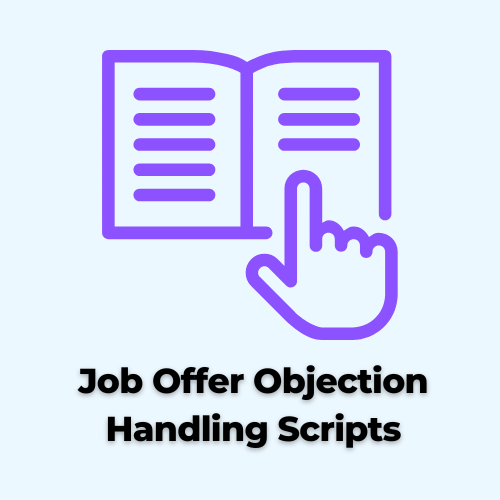
- Overcome Recruiter Pushback – Proven scripts to handle pushback and keep your salary negotiation on track.
- Communicate Effectively – Use expert responses to get recruiters to advocate for you with the compensation team.
- Get Here
If the recruiter returns with an updated offer that meets your personal needs and falls within the pay bands you researched, you should be ready to send an offer acceptance letter. Congrats on navigating your Nvidia negotiation successfully!
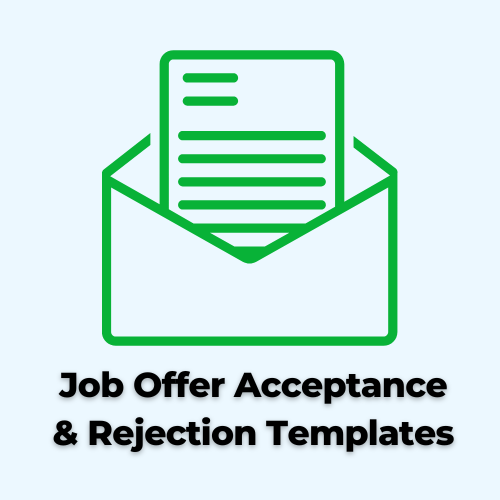
- Accept or Decline – Expert crafted job offer acceptance email and rejection email templates to share your decision.
- Professional & Genuine Tone – These help you communicate in a professional manner regardless of what you decide.
- Get Here
Mistakes to Avoid During a Nvidia Salary Negotiation
Now that you know what you should do during your Nvidia salary negotiation, let’s go over some things you shouldn’t do. Below is a list of top Nvidia salary negotiation mistakes you should do your best to avoid.
Avoid Sharing Salary Expectations Before You Get a Job Offer at Nvidia
Over the years, we’ve seen Nvidia recruiters try their best to uncover salary expectations before providing an actual offer. However, sharing your salary expectations before you have an offer in hand can actually make it more challenging to receive a better compensation package. How? Well, let’s take a look at how this might play out in practice: Say you share a lower Nvidia starting salary expectation with the recruiter than what they could offer. The recruiter will then be inclined to offer you that lower compensation. Alternatively, if you answer with a number higher than what they are able to realistically offer, they could become disinterested and decide to go with a different candidate.
So how can you avoid giving in to the recruiter’s questioning? Respond like this.
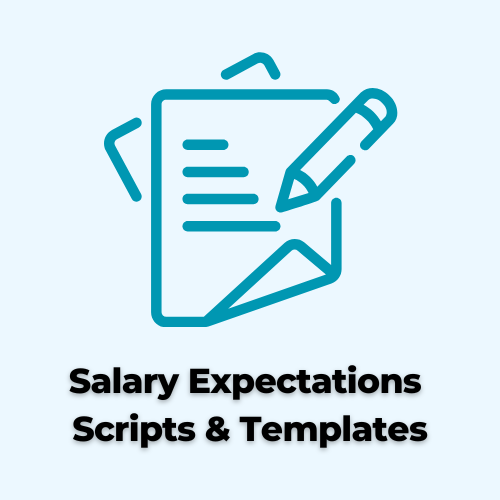
- Salary Expectation Responses – Scripts to overcome recruiter salary expectation discussions and pre offer calls.
- Avoid Lowballing Yourself – These call scripts and email templates will help you get a competitive offer.
- Get Here
Nvidia recruiters might even try to convince you that knowing your compensation expectations can help them find a deal that works well for both you and their team. While at first that might sound like a reasonable request, don’t forget that at the end of the day these recruiters have Nvidia’s best interests in mind, not yours. It also doesn’t make much sense to go over your salary expectations before you learn more about the specific role and benefits Nvidia can offer you.
Don't Be Afraid to Negotiate a Nvidia Job Offer
Don’t shy away from negotiating your Nvidia job offer because you’re nervous about losing out on the offer altogether. We’ve helped facilitate hundreds of successful salary negotiations and there’s nothing to be afraid of. In all our years of experience, we’ve never seen Nvidia take back a job offer because a candidate tried to negotiate. It's usually expected, regardless of the role level—whether it’s an IC role, Nvidia engineering manager salary, Nvidia director salary, or Nvidia VP salary—you should negotiate. You shouldn’t allow salary negotiation myths to keep you from advocating for the compensation you deserve.
Be Realistic by Doing Your Research
While Nvidia is a large and growing tech company that pays well, you never want to push for unreasonable compensation. That’s why understanding each element of your Nvidia compensation package is so essential. Take the time to research the pay ranges for your specific role so that you can make an appropriate ask.
Nvidia Salary Negotiation Coaching & Tools
Increasing your Nvidia compensation requires a deep understanding of the company’s compensation philosophy and the right salary negotiation strategy. Our expert Salary Negotiation Coaching will help you navigate the Nvidia salary negotiation process and secure the top end of the pay band.
Or leverage our Salary Negotiation Courses and Salary Negotiation Scripts.
 Job Offer Negotiation Course
Job Offer Negotiation Course
- Get our job offer negotiation strategies, templates, scripts, and guidance.
- Access our step-by-step lessons, compensation research guides, and tools.
- Access Now
 Raise Negotiation Course
Raise Negotiation Course
- Get our raise negotiation strategies, templates, scripts, and guidance.
- Access our step-by-step lessons, compensation research guides, and tools.
- Access Now

